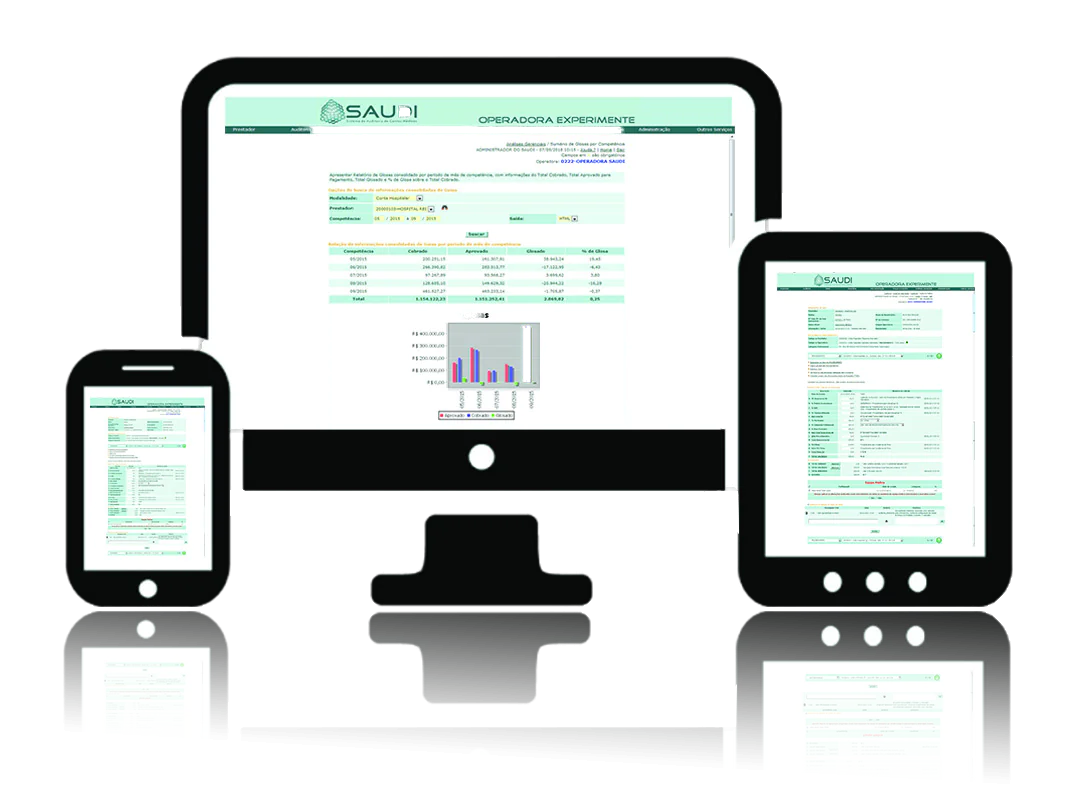The management of Orthoses, Prostheses and Special Materials (OPME) is a challenge for any health plan operator. On the one hand, this is a highly effective resource for treating some clinical conditions; on the other hand, it is a high-cost material and its effectiveness must be measured sensibly and on a scientific basis. Due to this delicacy in the administration of the area, OPME management deserves special attention.
The concept of OPME, within the medical field, covers a series of materials. The opening of the 2014 World Cup even illustrated how they are here to stay in the market. From mechanical legs to meshes for hernia correction, these materials have become part of everyday medicine. Day after day, new brands emerge, offering benefits that would previously have been unimaginable.
In this article, we will give you some practical tips on how to manage OPME efficiently. We will talk about reducing waste, deciding on cost-benefit and traceability of the resources used. Are you prepared to optimize your operator’s management processes? Stay with us!
Reduce waste
Materials that fall under the OPME concept cannot be reused or repurposed: if a doctor requests a material for a surgery, for example, and does not use it, it must be discarded. This may sound harmless when we talk about gloves, surgical threads or saline solution; When it comes to high-cost materials, however, waste represents great financial loss. For this reason, Medical Audit plays an important role in its use.
It is not just poor management of OPME that leads to waste. Communication failures — errors in counting materials, for example — can also cause this disorder. For this reason, reducing waste involves a series of factors ranging from storage control to prescription.
In this sense, simply monitoring formal prescription indications is not enough. A good control method is the use of checklists to confirm all prescriptions between various stages; This model is known as the “Swiss cheese model”, since any communication error will only prevail if there are “holes” in all stages. Among the sectors likely to be involved are requesting clinics, suppliers and doctors.
Evaluate the cost-benefit
Not all technology is superior to those that precede it. When we talk about OPME management, this concept intensifies even more — new brands can use the strategy of changing small details in their products and disproportionately increasing the price. As the marketing of these companies is very strong, the patient may demand technologies whose cost-benefit is not viable.
For these scenarios, the medical literature has already listed objective comparison parameters between different therapeutic methods. A goal for treatment is set (walking normally, for example, in the case of orthopedic prostheses) and different products are analyzed for this purpose. Among some indices used in the effectiveness of treatment is the Number Needed to Treat (NNT), evaluated for several medications.
Using scientifically proven efficiency indexes among OPMEs is one of the ways to measure their cost-benefit. This method provides more transparency to the decision to release materials by the health plan, avoiding patient dissatisfaction. As they are high-cost materials, OPME are generally released only on demand, after careful analysis and approval from the health plan.
Another cost-benefit dosing mechanism is the analysis of more than one professional in the process. This method divides opinions, because some doctors are supporters of greater freedom in the individual definition of treatment, an action that is supported by current legislation. There is no doubt, however, that it reduces excesses and avoids situations of unnecessary indications. One of the negative points is that, generally, it is expensive to keep professionals with this extra task.
Maintain traceability of devices used
Data collection is one of the fundamental parts of managing a health plan operator. With it, it is possible for the administrator to diagnose possible sources of inefficiency and correct them early. Since OPME management is a control of high cost resources, it is necessary for the manager to know very well where the materials are. According to current ANVISA regulations, OMPE traceability is mandatory for service providers.
This concept applies not only to the devices to be released, which must be closely monitored. OPME that has already been used can also be tracked and evaluated for effectiveness. Collecting this data reveals information that the medical literature does not have: it takes into account the competence of the professionals involved, the patients' risk factors and the geographic area.
Technology is an ally in this traceability process. Due to the possible high flow of materials, more robust innovation is required for fast and effective analysis. Nowadays, statistics sectors that deal with these jobs use the concept of “Big Data” — it is a way of analyzing and storing a large amount of data, in order to focus on the results to be obtained.
When it comes to OPME within the service network, traceability is a mechanism to avoid waste. Knowing exactly where the devices are, the chance of loss or exaggerated prescriptions is reduced. To this end, some strategies must be used: serial numbers for equipment and the Swiss Cheese model are some examples.
OPME management is a challenge for health plan operators. In addition to being materials that require high financial costs, their logistics involve several areas and are prone to human errors. In this sense, computerizing processes within the administration and having a fixed permissions protocol can be good strategies.
SAUDI is a system specialized in maintaining the financial health of health plan operators. It has software that automates the account audit process, providing clear and detailed reports. This is a way to use cutting-edge technology to your advantage when managing a health plan.
With advanced auditing and management methods, several parameters are optimized: from reducing rework in service providers to reducing human errors, all processes can increase their effectiveness. In OPME management, the reliability of a safe program makes all the difference in avoiding waste.
Would you like to know more about how we can help you with OPME management and other health plan operator administration work? Contact us. We look forward to meeting you!









